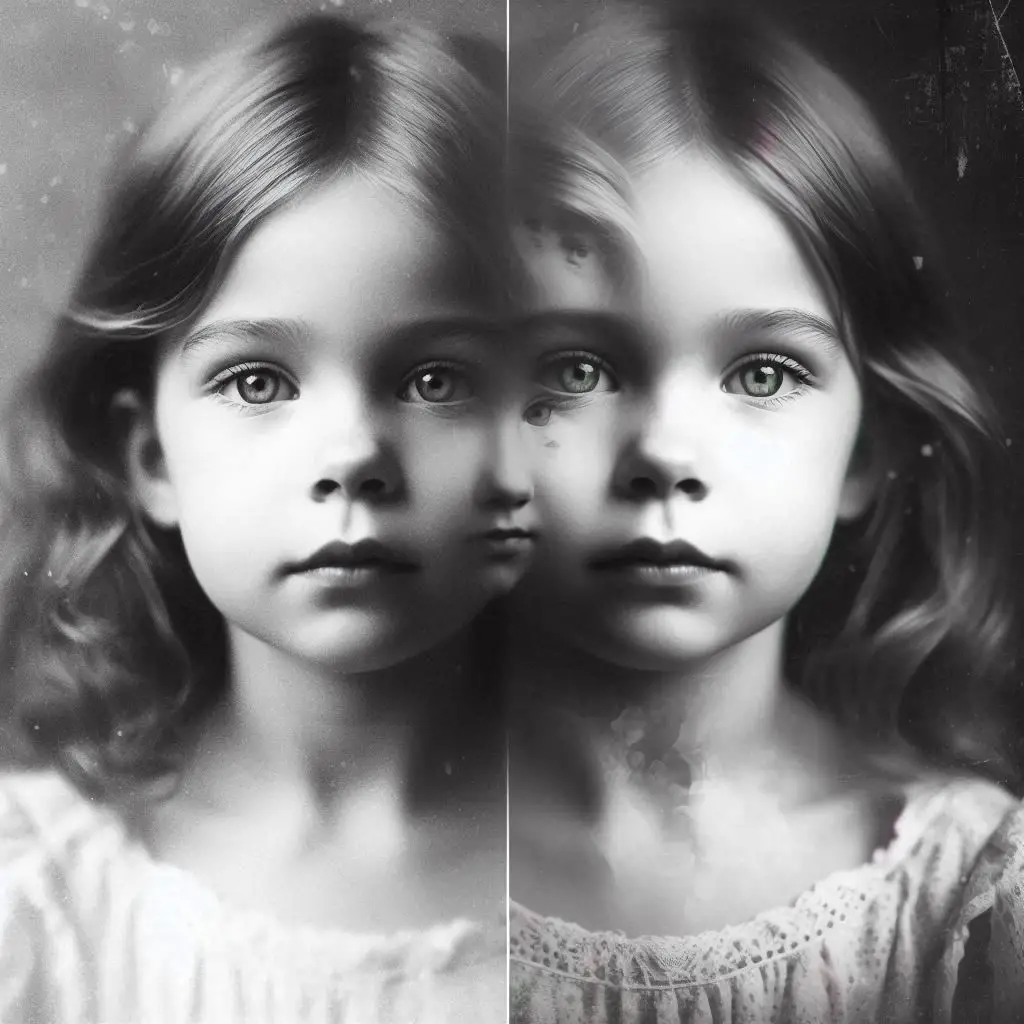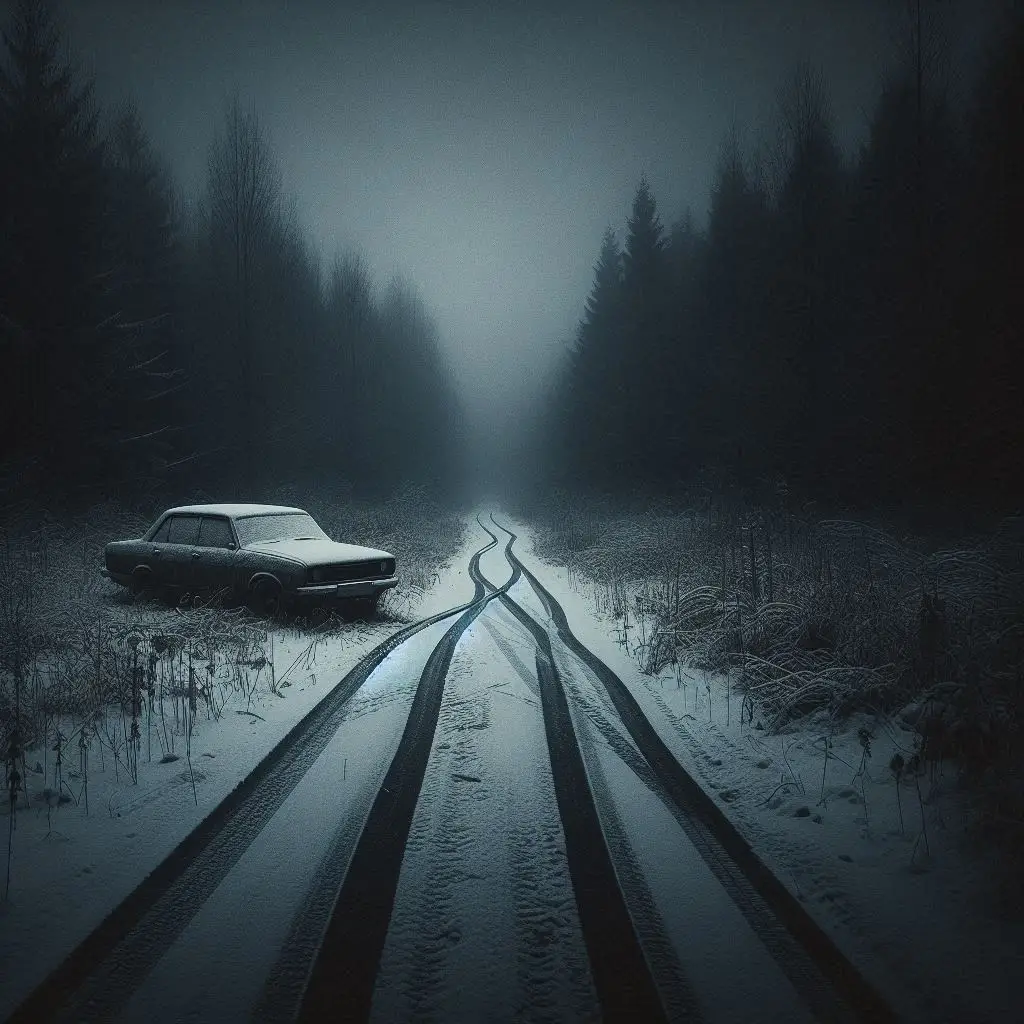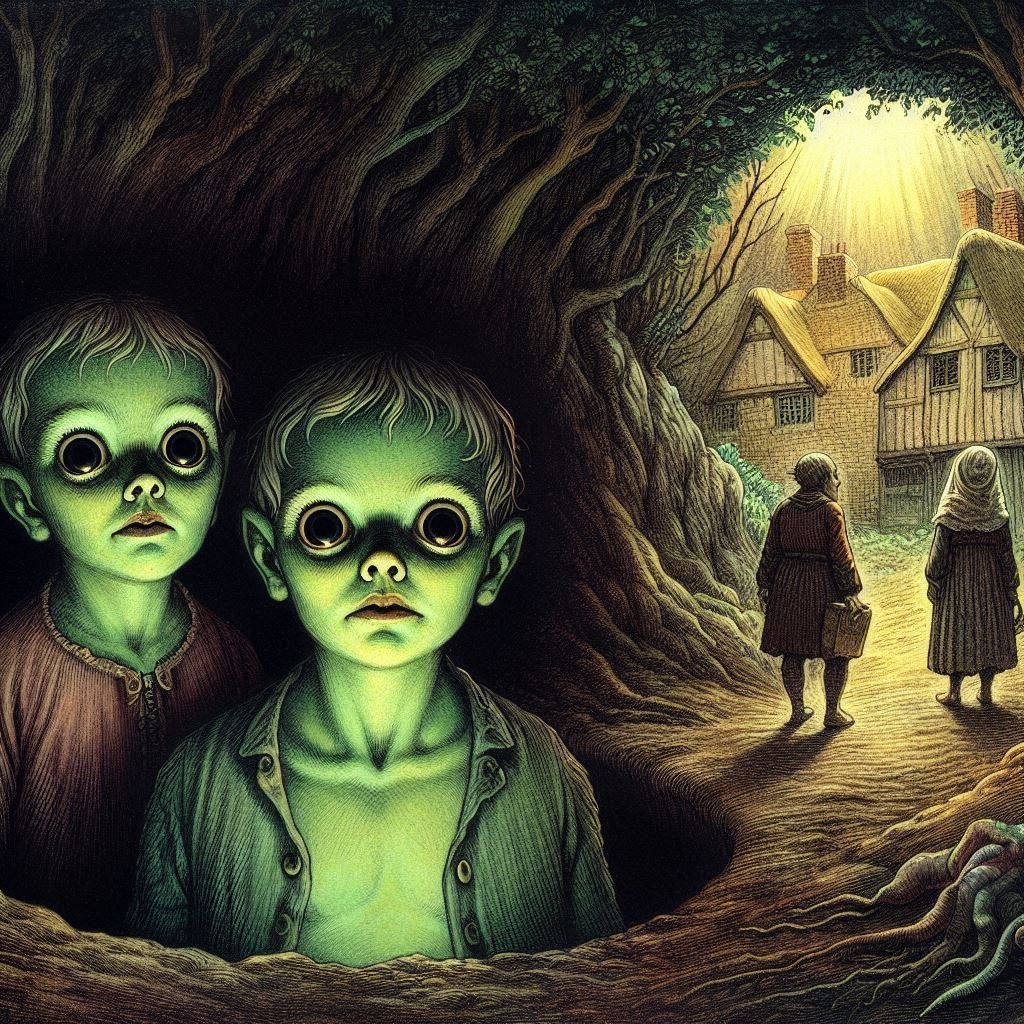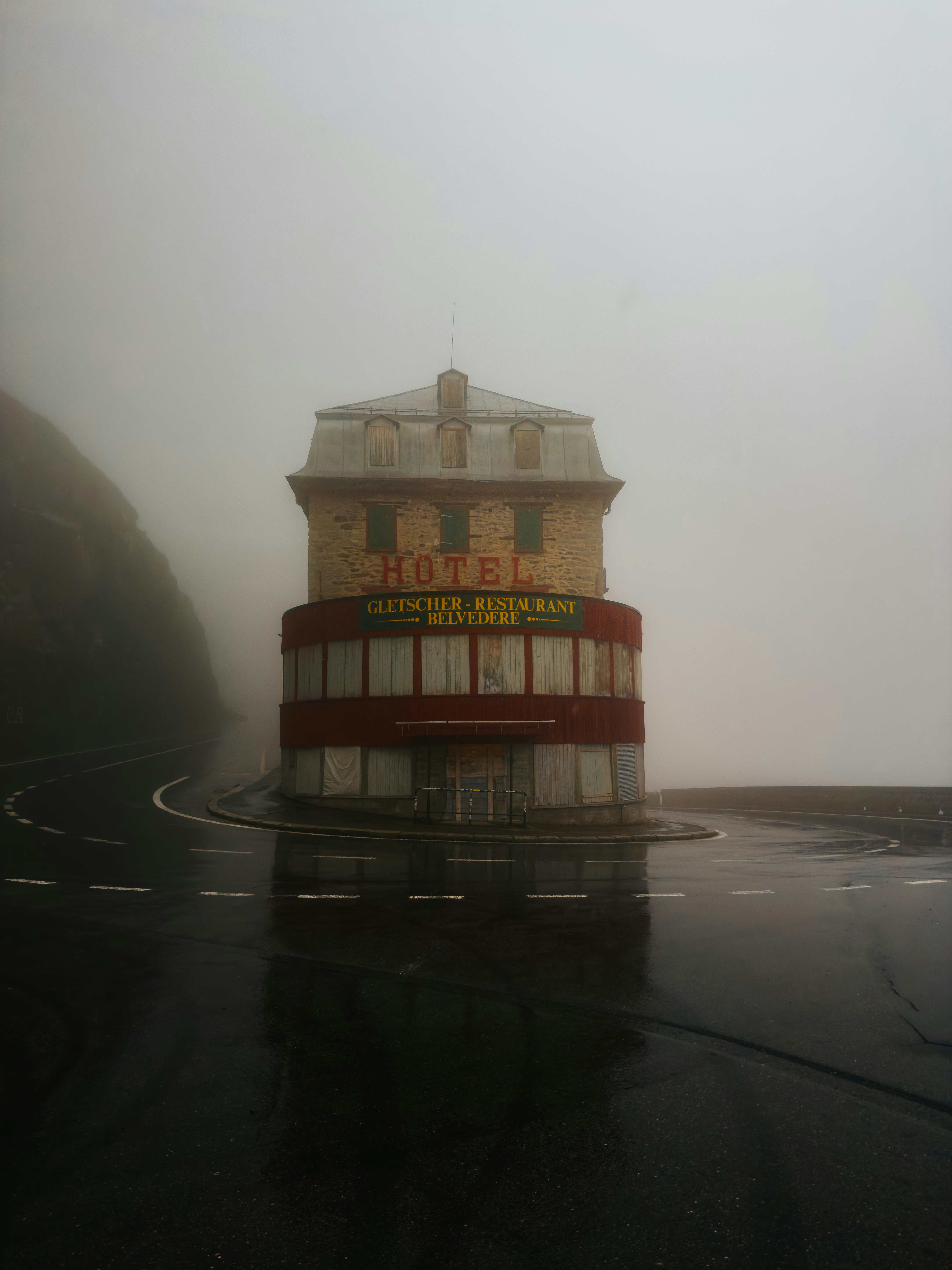Born Again? The Unbelievable True Story of Twins Who Remembered Their Past Lives.
Their older sisters died tragically in a car crash. Then, just over a year later, Florence Pollock gave birth to identical twins, Gillian and Jennifer. But these weren't just new children; they had birthmarks in the exact same spots as their deceased siblings, and as toddlers, they began to speak of vivid, chilling memories they shouldn't have: details of their old house, their toys, and even the horrific car accident itself. Was it an astonishing coincidence, or did the souls of Joanna and Jacqueline truly return? This is the mind-bending story of the Pollock Twins, a case that makes you question everything about life, death, and reincarnation.Alright, settle in, because today, we’re going to dive into a story that challenges everything we think we know about life, death, and the very nature of the human soul. It’s a tale so strange, so deeply unsettling, and so utterly unique, it sounds like something plucked straight from a supernatural thriller. But this isn't fiction. This is the real-life mystery of the Pollock Twins, a case that has baffled researchers and left many wondering: can souls truly be reborn? This is the story of reincarnation, or perhaps, the most astonishing coincidence in history. And trust me, it’s going to leave you with more questions than answers. Now, if you find yourself drawn to these kinds of strange, dark, and mysterious tales, do me a quick favor and consider hitting that like button. It truly helps the channel, and it lets me know you’re ready for more stories that defy all logic. Part 1: A Family Shattered – The Tragedy of Joanna and Jacqueline Our story begins in Hexham, Northumberland, England, in the mid-20th century. Our main characters are the Pollock family: Florence and John Pollock, and their two beloved daughters, Joanna and Jacqueline. Joanna Pollock was 11 years old. She was the older sister, responsible, caring, and full of life. She had a strong personality, a natural leader, and was very protective of her younger sister. Jacqueline Pollock was 6 years old. She was a sweet, lively child, known for her cheerful nature and a distinctive gap between her two front teeth. She also had a noticeable birthmark on her right hip, a small, dark mark that had been there since birth. The Pollock family was a close-knit, happy unit. They were a normal, loving family, living a quiet life in their English town. John Pollock, the father, was a devout Catholic, but over time, he had developed a strong personal belief in reincarnation – the idea that after death, a soul can be reborn into a new body. Florence, his wife, was more skeptical, but she loved her daughters fiercely. Then, on May 5, 1957, their world was shattered. It was a Sunday, a day that should have been peaceful. Joanna and Jacqueline were walking to church with a friend, a young boy named Anthony. As they walked along the road, a car, driven by a woman who was reportedly under the influence of drugs, suddenly swerved out of control. The car plowed into the three children. The impact was horrific. Joanna and Jacqueline were killed instantly. Their young friend, Anthony, also died. The grief that engulfed John and Florence Pollock was unimaginable. To lose one child is devastating; to lose both, in such a sudden and violent way, was truly soul-crushing. Their home, once filled with the laughter and energy of their daughters, became silent, empty, and filled with an aching void. Florence was particularly heartbroken, struggling deeply with the loss of her little girls. In the midst of this profound sorrow, John Pollock held onto his belief in reincarnation. He began to tell Florence that he believed their daughters would be reborn, that they would come back to them. Florence, in her grief, found this idea difficult to accept. It seemed almost disrespectful to the memory of their lost girls, and she couldn't imagine how such a thing could happen. But John was persistent. He felt a deep, unwavering conviction that their daughters' souls would return. And then, just over a year after the tragedy, something truly extraordinary happened. Part 2: A New Beginning? The Birth of the Twins In October 1958, 17 months after the tragic accident, Florence Pollock became pregnant again. This in itself was a bittersweet moment for the grieving parents. They hoped for a new child to bring some light back into their lives, but the memory of Joanna and Jacqueline was still fresh and painful. To their surprise, Florence gave birth to identical twin girls. They named them Gillian and Jennifer. The birth of the twins brought immense joy to the Pollock household, a much-needed ray of hope after the darkness they had endured. But almost immediately, there were details that struck Florence and John as incredibly strange, almost too coincidental to ignore. The first thing they noticed was Jennifer. She had a distinctive birthmark on her right hip. It was the exact same size, shape, and location as the birthmark that Jacqueline, their deceased younger daughter, had possessed. Florence, who had bathed Jacqueline countless times, knew this mark intimately. It was a small, dark oval, unmistakable. As the twins grew, another oddity appeared on Gillian, the older twin. She had a small, thin line, almost like a scar, on her forehead. John Pollock immediately recognized it. It was in the exact same spot where Joanna, their deceased older daughter, had received a small scar from hitting her head on a bucket when she was a child. These birthmarks were the first unsettling signs. Could it be a coincidence? Perhaps. Identical twins often share similar physical traits. But for these specific marks to appear on the new twins, mirroring their deceased sisters, in the exact same relative positions (older twin with older sister's mark, younger twin with younger sister's mark), felt like more than just chance. It felt like a whisper from the past. But the physical similarities were just the beginning. The truly strange, dark, and mysterious events were yet to unfold. Part 3: Uncanny Parallels – Fears and Familiarities As Gillian and Jennifer grew from infants into toddlers, their parents began to notice behaviors that were eerily similar to their deceased daughters. It was subtle at first, easily dismissed as imagination or wishful thinking. But then, the similarities became undeniable. One of the most striking parallels was their shared fear of cars. Even before they could speak in full sentences, if a car passed too close or too fast, both Gillian and Jennifer would become visibly distressed. They would cling to their parents, crying and trembling, as if reliving a terrifying memory. This was unusual for children their age, especially since they had no personal experience with a car accident. Then came the toys. John and Florence had carefully packed away all of Joanna and Jacqueline's toys after the accident, storing them in an attic, out of sight. They hadn't shown them to Gillian and Jennifer. Yet, one day, when the twins were around two or three years old, Florence brought down a box of the old toys. Gillian and Jennifer immediately, and without hesitation, went straight for specific toys that had belonged to Joanna and Jacqueline. Gillian picked up a particular doll and called it "Mary," which was Joanna's favorite doll. Jennifer immediately gravitated towards a small toy car, a specific one that Jacqueline had loved, and began to play with it in a way that mimicked Jacqueline's unique play style. Even more chilling, they began to show knowledge of the toys' condition. Jennifer, for example, picked up a doll that had a small, unique tear on its dress, a tear that only Jacqueline would have known about. She pointed to it and said, "Look, this is the tear from when I fell over." John and Florence were stunned. How could these young children know such specific details about toys they had never seen before, toys that had belonged to sisters they had never met? The parents also observed distinct personality traits mirroring their lost daughters. Gillian, the older twin, was more dominant and protective, much like Joanna. Jennifer, the younger, was more playful and a little more dependent, just like Jacqueline. Even their mannerisms, their way of holding their heads, their gestures, sometimes seemed to echo their deceased siblings. The coincidences were piling up, becoming harder and harder to explain away. John Pollock’s belief in reincarnation, once a solitary comfort, was now being eerily validated by the very children in front of him. Florence, the skeptic, found herself increasingly unable to deny the strange, unsettling evidence. Part 4: The Memories Emerge – Conversations That Shocked The most compelling evidence, however, came when Gillian and Jennifer started to articulate actual "memories" of their previous lives as Joanna and Jacqueline. These weren't vague feelings; they were specific, detailed recollections that sent shivers down their parents' spines. One day, when the twins were around three or four years old, they were playing outside. Jennifer suddenly pointed to a house down the street and said, "That's where we used to live! And the school is over there!" She then described the layout of the old house, details that only Joanna and Jacqueline would have known. Another time, they were walking past a specific local park. Jennifer pointed to a small, distinct bench and said, "That's where I fell and scraped my knee." Jacqueline had indeed fallen and scraped her knee on that very bench years before. The most disturbing "memory" came when they were playing with their dolls. Gillian, acting as Joanna, suddenly turned to Jennifer (acting as Jacqueline) and said, "The car is coming! It's coming right at us!" Jennifer then responded, "We're going to die!" They would then reenact the car accident, describing the car, the sound, and the feeling of being hit. They would vividly recall the details of the fatal crash, something they had absolutely no way of knowing. Think about that for a second. Two young children, born years after a horrific accident, spontaneously describing the details of that accident, including the moment of impact and the feeling of impending death. They spoke of the blood, the pain, and the fear. They even mentioned the color of the car that hit them. John and Florence were torn between overwhelming grief for their lost daughters and profound awe at the possibility that they had returned. They never pushed the children to remember, never fed them information. They simply listened, stunned, as their new daughters recounted details that only their deceased daughters could have known. These were not just random childhood fantasies. These were consistent, detailed, and accurate recollections of events that occurred before Gillian and Jennifer were even born. The parents documented these conversations, often in a state of disbelief, knowing that what they were witnessing defied all conventional explanation. Part 5: The Investigator – Dr. Ian Stevenson's Involvement The extraordinary nature of the Pollock twins' case eventually attracted the attention of a man who dedicated his life to studying such phenomena: Dr. Ian Stevenson. Dr. Stevenson was a Canadian-American psychiatrist and professor at the University of Virginia. He was renowned for his meticulous and rigorous research into cases suggestive of reincarnation. Unlike many who dismissed such claims outright, Stevenson approached them with a scientific mind, carefully documenting and investigating hundreds of cases of children who claimed to remember past lives. He looked for specific, verifiable details that the child could not have learned through normal means. The Pollock twins case was one of Stevenson's most famous and well-documented cases. He visited the Pollock family multiple times, interviewing John and Florence extensively, and observing Gillian and Jennifer. Stevenson's method involved: Collecting detailed accounts: He would record everything the children said about their "past lives" without leading them. Verifying facts: He would then try to verify these details with independent sources – family members, friends, public records, and even physical locations. Ruling out normal explanations: He would systematically try to find any way the child could have learned the information through normal means (e.g., overhearing conversations, seeing old photos, being told stories). In the case of the Pollock twins, Stevenson was particularly struck by: The birthmarks: He noted the precise matching of Jennifer's hip birthmark with Jacqueline's, and Gillian's forehead mark with Joanna's scar. He had documented many cases where birthmarks or birth defects on a child corresponded to wounds or marks on the body of the deceased person they claimed to be. The shared fears: The twins' intense fear of cars, especially fast-moving ones, was consistent with the traumatic death of their previous "selves." The specific memories: The detailed recollections of the old house, the school, the park bench, and especially the car accident, were highly compelling. Stevenson noted that the parents had made a conscious effort not to talk about Joanna and Jacqueline in front of the new twins, trying to give them a fresh start. Yet, the memories still emerged. Stevenson concluded that the Pollock twins case was one of the strongest pieces of evidence for reincarnation he had ever encountered. He believed that the collective weight of the evidence – the birthmarks, the shared fears, the specific memories, and the lack of any obvious normal explanation – pointed strongly towards the possibility that the souls of Joanna and Jacqueline had indeed been reborn into Gillian and Jennifer. Part 6: Reincarnation or Coincidence? Debating the Evidence The Pollock twins case, despite Stevenson's detailed research, remains a lightning rod for debate. Is it truly evidence of reincarnation, or can it be explained by more conventional means? Let's look at the arguments: Arguments for Reincarnation: Specific Physical Marks: The matching birthmarks and scar-like marks are incredibly precise and difficult to dismiss as mere coincidence, especially given their exact locations. Shared Traumatic Fears: The intense, unlearned fear of cars, mirroring the manner of death of the previous siblings, is a powerful indicator. Detailed, Verifiable Memories: The children's ability to recall specific, accurate details about the previous lives – places, toys, events, and even the accident itself – that they could not have learned through normal means, is the cornerstone of this argument. Lack of Obvious Alternative: For believers, no other single explanation fully accounts for all the bizarre details of the case. Emotional Conviction of Parents: While subjective, the parents' profound belief, particularly Florence's journey from skepticism to conviction, adds a human element to the argument. Arguments for Coincidence / Other Explanations: Parental Influence (Conscious or Unconscious): This is the most common counter-argument. Even if the parents tried not to talk about the deceased girls, they might have done so unconsciously. Or perhaps, in their grief, they interpreted innocent childhood remarks or play as "memories." Children are highly imaginative and can pick up on subtle cues. Counter-point: Stevenson and the parents insisted they were very careful not to lead the children. The details were often spontaneous and surprising. Confirmation Bias: Did the parents only remember and highlight the details that fit their belief in reincarnation, while dismissing those that didn't? Genetic Memory/Shared Traits: Is it possible that some memories or personality traits are somehow passed down genetically, or that identical twins simply share more predispositions? Counter-point: This doesn't explain specific event memories, like the car crash details, which are not typically considered genetic. Childhood Imagination/Fantasy: Children often have vivid imaginations and can create elaborate fantasy worlds. Could the "memories" simply be a form of imaginative play? Counter-point: The consistent accuracy and specific nature of the details make this less likely than simple fantasy. Lack of Scientific Proof: Reincarnation is not a scientifically proven phenomenon. Without a mechanism to explain how memories or souls could transfer, it remains outside the realm of mainstream science. Selective Reporting: Critics argue that only the most compelling details are highlighted, while less convincing ones are overlooked. The debate often boils down to whether one is willing to accept a phenomenon that defies current scientific understanding, or if one believes there must be a conventional explanation, even if it's not immediately obvious. Part 7: The Fading Memories and a Normal Life Perhaps one of the most intriguing aspects of the Pollock twins' story is what happened as they grew older. As Gillian and Jennifer entered their early school years, the "memories" of Joanna and Jacqueline began to fade. The vivid recollections of the car crash, the old house, and the specific toys became less frequent, then eventually stopped altogether. It's common in cases of alleged reincarnation that these "past life memories" tend to disappear as children grow older, usually by the age of five to seven. It's as if the new personality fully takes over, and the old memories are no longer needed or accessible. Gillian and Jennifer went on to live relatively normal lives. They attended school, made friends, and pursued their own interests. They grew up to be distinct individuals, no longer defined by the strange bond and shared memories of their early childhood. They became, simply, Gillian and Jennifer. As adults, they have spoken about their experiences, though they remain private individuals. They acknowledge the strange events of their childhood, but they don't necessarily claim to be the reincarnated versions of their sisters. They recognize the profound impact it had on their parents and on their own understanding of life. They have lived with the weight of this extraordinary story, a story that continues to fascinate and perplex. The case of the Pollock Twins stands as a powerful testament to the enduring mystery of consciousness and memory. It forces us to ask: What happens to us after we die? Does something of us persist? Can a soul truly find its way back? Or are these astonishing parallels simply the most incredible string of coincidences ever recorded, a trick of the mind, or a desperate hope in the face of unimaginable grief? The answers remain elusive, locked away in the strange, dark, and mysterious corners of existence. But the story of Gillian and Jennifer, the twins who remembered, continues to echo, a haunting whisper about the possibility that life, and death, might be far more complex than we can ever truly comprehend. What do you think happened to the Pollock Twins? Reincarnation or coincidence? Let me know your theories in the comments below. And until our next strange, dark, and mysterious tale, stay curious, and keep an open mind.






